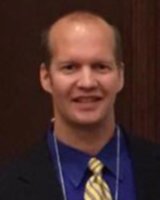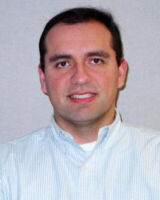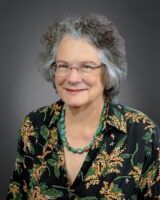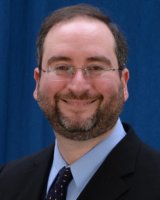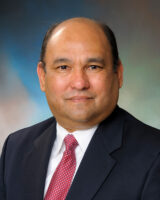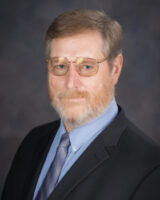65th Annual Biosafety and Biosecurity Hybrid Conference
Professional Development Courses
Monday, September 12, and Wednesday, September 14, 2022, from 12:30 PM – 5:00 PM CDT
1V. Animal Research for Biosafety Professionals – An Introduction
Animal Research has contributed to major scientific advances in biomedical, veterinary, and environmental sciences and in public health. However, these efforts often pose significant risks to the health and safety of research and facility staff due to the wide range of species, complex experimental procedures and equipment, and facility hazards that are involved. Balancing optimal worker safety and animal welfare with research objectives yields the best results but requires a solid understanding of how animal programs are managed and an ability to identify and mitigate inherent risks. This course provides a thorough introduction to routine hazards commonly encountered in animal programs that utilize rodents, small animals, nonhuman primates, aquatics, and agricultural species, with a primary focus on identifying and managing biological, chemical, radiological, and physical hazards. The instructors are experienced laboratory animal veterinarians who are actively involved in the management, oversight, and evaluation of animal care and use programs. Topics include assessment and management of animal program hazards; universal regulations, guidelines, and quality standards that apply to animal research; duties and responsibilities of key program personnel; local oversight systems; best practices that enhance the quality of animal care; and strategies for biosafety professionals to develop and maintain effective partnerships with program staff and institutional animal care and use committee members. Opportunities will be provided to apply new knowledge and skills through group interactive activities and problem-solving sessions.
Objectives:
- Review basic hazard identification and risk assessment techniques relevant to research involving live animals
- Summarize the governing regulations and guidelines that pertain to the care and use of research animals, recognizing the difference between “regulatory requirements” and “best practices” that relate to performance-based standards
- Identify successful strategies for working effectively with animal program personnel on common research safety issues
Suggested Background: None
Target Audience: New Biosafety Professionals, All Safety Professionals, Laboratory Workers
Audience Level: Basic
|Course Length: 8 hours (two 4-hour live sessions with a 30-minute break each session)
COURSE FACULTY
CONTACT HOURS
This course has been approved for 1.0 CM points toward RBP/CBSP recertification. ABSA International is approved as a provider of continuing education programs in the clinical laboratory sciences by the ASCLS P.A.C.E.® Program. This course is approved for 8.0 P.A.C.E.® contact hours.
Monday – Friday, September 19-23, 2022 from 10:00 AM – 11:30 AM CDT
2V. IATA Infectious Substance Shipping Certification
This course is appropriate for those who have some experience with infectious substance handling or shipping but may not have been certified within the past 3 years and those with little to no previous training. The course utilizes several facilitated learning activities. The course will be administered in five, 1.5-hour virtual sessions, Monday – Friday. There will be group discussions and interactive exercises focused on the essential areas of infectious substance shipping. New IATA requirements for competency assessment will be administered daily in short interactive homework assignments, and an online exam. Participants will mark, label, package, and complete documentation for infectious substance shipments (Category A, Category B, and Exempt Patient Specimens), and review applicable regulations with a focus on IATA. Additional US DOT differences will also be addressed. This course is appropriate for those responsible for packaging, marking, and labeling shipments of all categories of infectious substances, dry ice, and liquid nitrogen. Participants have both an online exam (score at least 80%) and practical exercises to complete to demonstrate competency. Successful completion of the course will qualify participants for IATA/DOT certification.
Objectives:
- Review and understand shipping regulations for both air and ground with a particular focus on 49 CFR US DOT and IATA air regulations
- Conduct risk assessment and be able to properly classify and identify infectious substances for transport purposes
- Package, mark/label and prepare documentation for shipments of infectious substances to meet regulatory requirements for air and ground shipments
Suggested Background: None
Target Audience: All Safety Professionals, New Biosafety Professionals
Audience Level: Basic
Course Length: 8 hours (classwork and five 1.5-hour live sessions)
COURSE FACULTY
CONTACT HOURS
This course has been approved for 1.0 CM points toward RBP/CBSP recertification. ABSA International is approved as a provider of continuing education programs in the clinical laboratory sciences by the ASCLS P.A.C.E.® Program. This course is approved for 8.0 P.A.C.E.® contact hours.
Monday, October 3 and Friday, October 7, 2022, from 10:30 AM – 3:00 PM CDT
3V. Articulating the Value of Your Biosafety Program
A recurrent challenge confronting biosafety professionals is the ability to garner necessary program resources to achieve desired goals and objectives. The basis for this difficulty is that, on a good day in the world of biosafety, “nothing happens”. The underlying challenge is that upper management may not fully appreciate or understand all of the effort and resources that went into making “nothing happen”. Biosafety professionals in particular experience difficulty in this regard because many in the profession have received intensive training in the biological sciences, but little or no training in the area of program management. This course focuses on some key management approaches and techniques that can be used within biosafety programs to help improve stakeholder understanding, which in turn can result in the provision of necessary programmatic resources. Numerous real-world examples of successful applications of the techniques presented will be displayed for review and discussion. Ample time will be provided throughout the course for participant interaction and inquiries.
Objectives:
- Identify various biosafety programmatic measures and metrics that should be captured and communicated
- Restate the techniques that can be used for displaying biosafety data in ways that others can readily understand and appreciate it
- Describe how biosafety programs can assist with other basic safety program needs to help avoid the notion of program duplication of efforts and to improve safety and client satisfaction levels
Suggested Background: None
Target Audience: All Safety Professionals, All Biosafety Professionals
Audience Level: Intermediate
Course Length: 8 hours (two 4-hour live sessions with a 30-minute break each session)
COURSE FACULTY
CONTACT HOURS
This course has been approved for 1.0 CM points toward RBP/CBSP recertification. ABSA International is approved as a provider of continuing education programs in the clinical laboratory sciences by the ASCLS P.A.C.E.® Program. This course is approved for 8.0 P.A.C.E.® contact hours.
Friday, February 17, 2023, from 10:00 AM – 3:00 PM CDT
4V. BSL-3 Design and Operations: Lessons from the Trenches
Many academic institutions have built Biosafety Level 3 containment laboratories over the past 15 years, anticipating these facilities to be an instrument to attract researchers and stay on the cutting edge of science. Most of these labs have been successfully operated since construction while others have become dormant due to various factors ranging from poor initial design, construction issues, engineering flaws, lack of operational staff, lack of funding for the operation of the lab, and ongoing maintenance costs. When planning and designing these facilities, it is essential to consider the costs and other needs (e.g., staffing and procedures) associated with maintaining these facilities over the long term. This course will present lessons learned by the instructor from experiences related to the design, operation, and maintenance of a variety of high-containment laboratories (BSL-3, ABSL-3, etc.). Lab design parameters, utility requirements, maintenance and operation best practices, and tips and tricks will be shared with participants through lectures, small group discussions, and case studies.
Objectives:
- Restate the components and requirements for managing a BSL-3 facility
- Summarize the potential pitfalls and mistakes in lab design and operations
- Describe the best practices in preventative maintenance for BSL-3 facilities
Suggested Background: Fundamentals of Biosafety, Biosafety Level 3 Design and Operations
Target Audience: All Safety Professionals, Facilities Maintenance Staff
Audience Level: Basic
Course Length: 4 hours (one 4-hour live session with a 60-minute break)
COURSE FACULTY
CONTACT HOURS
This course has been approved for 0.5 CM points toward RBP/CBSP recertification. ABSA International is approved as a provider of continuing education programs in the clinical laboratory sciences by the ASCLS P.A.C.E.® Program. This course is approved for 4.0 P.A.C.E.® contact hours.
Thursday, September 29, 2022, from 10:00 AM – 3:00 PM CDT
5V. Laboratory Transition: Planning for the Inevitability of Change
Life sciences facilities are expensive and require long timelines for facility change. The last few years have emphasized the importance of adaptable, flexible solutions to accommodate changing needs for laboratory operations. Everyone has experienced the trials of transition during the global COVID-19 pandemic. A changing environment necessitates rapid shifts in programs; as we move into a post-COVID world, we can expect additional challenges, both predictable and unforeseen. Given the speed of change and the expectation to react quickly and decisively, designing and implementing laboratory programs addressing the current and future requirements is key. This course will discuss the methods for assessing needs and planning for change, including components for consideration in both facility design and science operations. Discussions will be focused on the development of new facilities and programs with the inevitability of change in mind; applying lessons learned from experience in the field; identifying risks, opportunities, and strategies for a resilient program that is able to respond to current and future challenges. The course will walk through a series of scenarios to discuss program redirection with and without facility renovation and participants will have the opportunity to identify actions that will prepare their own organizations for potential change.
Objectives:
- Discuss recent emphasis on flexibility in program design, including defining “flexibility” for different organizations
- Review methods for assessing needs and planning for change as it occurs
- Identify risks, opportunities, and strategies for a resilient program that is able to respond to current and future challenges
Suggested Background: None
Target Audience: All Safety Professionals, Laboratory Managers, Program Managers, Institutional Leadership
Audience Level: Intermediate
Course Length: 4 hours (one 4-hour live session with a 60-minute break)
COURSE FACULTY
CONTACT HOURS
This course has been approved for 0.5 CM points toward RBP/CBSP recertification. ABSA International is approved as a provider of continuing education programs in the clinical laboratory sciences by the ASCLS P.A.C.E.® Program. This course is approved for 4.0 P.A.C.E.® contact hours.
Friday, October 14, 2022, 8:00 AM – 5:00 PM
1. Basic Risk Assessment
Rapid scientific and technological advances continue to challenge the biosafety community in determining and establishing the practices and containment necessary to avoid exposure to hazardous biological agents and materials found in the laboratory. This introductory course will provide an opportunity to incorporate the basic knowledge and skills necessary to perform risk assessments for working safely with pathogens (human and animal) and rDNA (genetically modified organisms or viral vectors). Using case studies, participants will work together to conduct risk assessments by determining the hazards involved; the appropriate questions to ask to address the potential risks associated with the intended activities and make recommendations on appropriate containment and practices required to work safely. Each group will present their conclusions from the activity.
Objectives:
- Identify and list determinants for assessing risk (host, environment, agent)
- Complete the steps of a risk assessment and determine steps to manage risk (mitigation)
- Identify resources and references for risk assessment/management
Suggested Background: Fundamentals of Biosafety
Target Audience: New Biosafety Professionals, Laboratory Workers
COURSE FACULTY
CONTACT HOURS
This course has been approved for 1.0 CM points toward RBP/CBSP recertification. ABSA International is approved as a provider of continuing education programs in the clinical laboratory sciences by the ASCLS P.A.C.E.® Program. This course is approved for 8.0 P.A.C.E.® contact hours.
Friday, October 14, 2022, 8:00 AM – 5:00 PM
2. Keeping it Going: Maintaining and Improving a Select Agent Program over the Long Term
Keeping a select agent program going can be difficult, especially in the face of ever-changing regulatory requirements and limited resources. Established procedures may suddenly become unacceptable by interrupting research, and frustrating laboratorians. Likewise, a single unexpected adverse event can put an entire program at risk. Being prepared to deal with such changes and events is critical to maintaining a robust program. Anticipating future challenges can be even more advantageous, elevating a program from good to great program. A proactive approach can minimize the impact of new requirements and reduce the duration and frequency of crises sparked by sudden, unexpected requirements or events. This course will explore strategies for maintaining and improving an existing Select Agent program, including strategies for anticipating and responding to new requirements. The focus will be on U.S. Select Agent requirements, although a section on comparable requirements in the international community will be included. Strategies will be based on the instructors’ experience with their program with additional input solicited from class participants during open discussions. Topics will include select agent program history; effective oversight practices; efficiently meeting ongoing requirements; reporting, responding to, and analyzing incidents; suitability program case studies; implementation of the recent inactivation requirements, including strategies for investigating inactivation “failures;” and inspection preparation and response. The course will consist of topical presentations followed by group discussions aimed at facilitating the application of presented strategies to participants’ individual programs and providing a platform to capitalize on participants’ collective experience.
Objectives:
- Identify strategies for: efficiently maintaining a select agent or equivalent program in good standing with ongoing requirements and being able to efficiently implement necessary changes and preparing for and responding to regulatory inspections
- Review a series of suitability program case studies and identify strategies for dealing with potential suitability concerns in accompanying exercises
- Summarize inactivation requirements and identify successful strategies for compliance
Suggested Background: None
Target Audience: All Safety Professionals, Select Agent Program Safety Professionals
COURSE FACULTY
CONTACT HOURS
This course has been approved for 1.0 CM points toward RBP/CBSP recertification. ABSA International is approved as a provider of continuing education programs in the clinical laboratory sciences by the ASCLS P.A.C.E.® Program. This course is approved for 8.0 P.A.C.E.® contact hours.
Friday, October 14, 2022, 8:00 AM – 5:00 PM
3. Part I – Quality Management System for Biorisk Management: ISO 35001:2019
Biorisk Management is a comprehensive approach to assess, control, mitigate, and ultimately manage risks associated with biological materials. Historically, and from a laboratory perspective, this has been done primarily under the umbrella of certain biosafety and biosecurity practices and principles. However, in today’s environment, this mostly reactive approach cannot be considered sufficient anymore. Consequently, a much more comprehensive and proactive management system approach is required to deliver on the expectations for safe, secure, and ethical research and development involving biological agents and systems. This comprehensive two-part workshop will introduce the aspects and components of a quality management system based on ISO 35001:2019, as it relates to biorisk management as well as discuss specific implementation strategies. By utilizing specific quality management tools, approaches and concepts, laboratories will advance in their overall compliance, stakeholder satisfaction, and move towards a proactive, continuously improving biorisk management system. This will allow for addressing future needs and expectations for safe, secure, and ethical research and development involving biological agents and systems.
In Part I, participants will discuss the concept of a quality management system and how it relates to ISO 35001:2019. Concepts like QMS, quality key principles, PDCA, logic model, and risk management will be addressed and applied within practical hands-on exercises during the workshop. By understanding the key principles behind ISO 9000/9001, participants will be able to better understand the structure and components of ISO 35001:2019 and its application and/or implementation within the laboratory setting. Included in the cost of the workshop, participants will receive an electronic, licensed copy of ISO 35001:2019.
This course is now full!
Objectives:
- Identify and describe the relationship between ISO:9001 and ISO:35001
- Restate the principles of a quality management system and explain how it applies to biorisk management
- Name and apply the key components of risk management
- Describe the advantages and challenges of a biorisk management system
Suggested Background: Risk Assessment
Target Audience: All Safety Professionals, All Biosafety Professionals, Laboratory Managers, Directors and Executives
COURSE FACULTY
CONTACT HOURS
This course has been approved for 1.0 CM points toward RBP/CBSP recertification. ABSA International is approved as a provider of continuing education programs in the clinical laboratory sciences by the ASCLS P.A.C.E.® Program. This course is approved for 8.0 P.A.C.E.® contact hours.
Saturday, October 15, 2022, 8:00 AM – 5:00 PM
4. Engineering for the Biosafety Professional—Part I
Biosafety professionals (BSOs) need to be involved and knowledgeable in the operation, maintenance, and certification of their biocontainment facilities and building systems. The BSO is called upon to participate in the planning, design, and validation of a new biocontainment laboratory or renovation of an existing facility. This course provides basic engineering principles that are useful in the planning, design, and operation of a BSL-3 facility and is intended to fill the gap by providing basic knowledge for understanding the processes used in the planning, design, construction, maintenance, and operation of a BSL-3 laboratory. For the BSO to participate in these activities, they need to understand engineering fundamentals, develop skills to ask questions in engineering terms, and possess the confidence to question the answers. This is the first course of a two-part series offered in alternating years. Part I of the course will provide information relevant to BSL-3 facilities for the determination of air change rates, define HVAC containment boundaries, interpret design drawings, understand HEPA filtration, provide an introduction to determining room heat loads and ventilation rates, provide concepts in directional airflow and room pressure differentials as well as an introduction to HVAC components. There will be presentations on planning, design (with a checklist), construction oversight, commissioning, certification/validation/ANSI Z9.14 Standard, maintenance, and operations. Upon course conclusion, the participants should have the knowledge to better understand engineering issues in the planning, design, construction, commissioning, certification/validation, and post-occupancy of biocontainment facilities, be able to formulate informed questions, be able to interact with maintenance personnel and integrate facility operations with the biosafety program.
Objectives:
- Discuss the engineering principles, design, and construction process of a BSL-3 laboratory in order to identify potential problems before construction begins
- Identify the phases and the strategies of a BSL-3 laboratory design
- Describe the elements of a quality assurance program
Suggested Background: None
Target Audience: All Biosafety Professionals, All Safety Professionals, Operations and Maintenance Personnel
COURSE FACULTY
CONTACT HOURS
This course has been approved for 1.0 CM points toward RBP/CBSP recertification. ABSA International is approved as a provider of continuing education programs in the clinical laboratory sciences by the ASCLS P.A.C.E.® Program. This course is approved for 8.0 P.A.C.E.® contact hours.
Saturday, October 15, 2022, 8:00 AM – 5:00 PM
5. BSL-3 Operations and Management
This course will review the important aspects of BSL-3 Operations and Management from two points of view; “hardware” (i.e., facilities & equipment issues) and “software” (i.e., administrative controls). It will cover various aspects you need to consider in order to operate a BSL-3 facility, such as training, maintenance support, occupational health, waste management, maintenance, performance verification, and emergency response. The instructors will encourage interaction and the exchange of experiences among the participants. Regulatory aspects from any specific country, or planning, design, or construction-related issues will not be covered.
Objectives:
- Describe the elements of BSL-3 Operations and Management (risk management, primary barriers, annual performance verification, emergency response, etc)
- Recognize institutional, management, and user responsibilities
- Summarize approaches to developing manuals, SOPs, and training
Suggested Background: Basic Risk Assessment and familiarity with BSL-3 Concepts
Target Audience: Safety Professionals, BSL-3 Managers, Containment Engineers, Lab and Scientific Directors
COURSE FACULTY
CONTACT HOURS
This course has been approved for 1.0 CM points toward RBP/CBSP recertification. ABSA International is approved as a provider of continuing education programs in the clinical laboratory sciences by the ASCLS P.A.C.E.® Program. This course is approved for 8.0 P.A.C.E.® contact hours.
Saturday, October 15, 2022, 8:00 AM – 5:00 PM
6. Part II – Biorisk Management Systems: Implementation Strategies for ISO 35001-2019
Biorisk Management is a comprehensive approach to assess, control, mitigate, and ultimately manage risks associated with biological materials. Historically and from a laboratory perspective, this has been done primarily under the umbrella of certain biosafety and biosecurity practices and principles. However, in today’s environment, this mostly reactive approach cannot be considered sufficient anymore. Consequently, a much more comprehensive and proactive management system approach is required to deliver on the expectations for safe, secure, and ethical research and development involving biological agents and systems. This comprehensive two-part workshop will introduce the aspects and components of a quality management system based on ISO 35001:2019, as it relates to biorisk management as well as discuss specific implementation strategies. By utilizing specific quality management tools, approaches and concepts, laboratories will advance in their overall compliance, stakeholder satisfaction and move towards a proactive, continuously improving biorisk management system. This will allow for addressing future needs and expectations for safe, secure, and ethical research and development involving biological agents and systems.
Part II of this workshop series will build on the concepts introduced in Part 1 and discuss specific implementation strategies and tools. Through hands-on group exercises, we will take a closer look at the concept of gap analysis, documentation control, process mapping, and audits. In addition, we will discuss specific implementation steps for ISO:35001:2019 and analyze the key clauses of ISO 35001 in more detail.
This course is now full!
Objectives:
- Describe the importance of gap analysis and document control
- Name critical components of an SOP
- Map specific processes within the work environment and identify the necessary requirements for internal audits
- Successfully initiate the implementation of individual clauses of ISO 35001-2019 and apply the principles of a QMS
Suggested Background: Part I—Quality Management System for Biorisk Management: ISO 35001:2019 or participation in the 2021 or 2022 ABSA webinar (Introduction to Biorisk Management Systems and ISO 35001)
Target Audience: All Safety Professionals, All Biosafety Professionals, Laboratory Managers, Directors, and Executives
COURSE FACULTY
CONTACT HOURS
This course has been approved for 1.0 CM points toward RBP/CBSP recertification. ABSA International is approved as a provider of continuing education programs in the clinical laboratory sciences by the ASCLS P.A.C.E.® Program. This course is approved for 8.0 P.A.C.E.® contact hours.
Saturday, October 15, 2022, 8:00 AM – 5:00 PM
7. Animal Research for Biosafety Professionals – Advanced
This course builds on general principles presented in the introductory class (Animal Research for Biosafety Professionals – An Introduction) and focuses on complex animal and research-based scenarios that present unique and challenging safety concerns. Topics include viral vectors; patient-derived xenografts (PDX) and humanized animals; nanoparticles; cytotoxic drugs; arthropod containment within a vivarium; aquatic animal models; wildlife species; biosecurity challenges; facility design; animal imaging; high-containment; animal program disaster planning; and management of chemical and biological wastes (e.g., bedding and carcasses). Proven strategies for optimizing safety program outcomes through constructive partnerships between safety professionals and key animal program representatives will be presented. The course will be highly interactive and focus on problem-based learning through scenarios and interactive exercises that illustrate “real world” examples. Participants will practice developing strategies to identify potential hazards, assess the magnitude and extent of induced risks, and implement effective and cost-efficient control measures that protect the safety of workers, animals, and the environment. Participants will work in small groups and utilize an online survey tool during larger group discussions.
Objectives:
- Review hazard identification and risk assessment strategies as they pertain to a variety of animal models, including aquatics and wildlife, and complex animal facility environments
- Apply effective control strategies for unique animal hazards through proactive experimental design and facility management procedures
- Identify ways safety professionals can partner with animal program personnel to address new and emerging safety issues associated with animal-based research
Suggested Background: A basic understanding of, and experience with, identifying and managing common hazards found in animal research (Animal Research for Biosafety Professionals – An Introduction)
Target Audience: Experienced Biosafety Professionals, All Safety Professionals, Laboratory Workers
COURSE FACULTY
CONTACT HOURS
This course has been approved for 1.0 CM points toward RBP/CBSP recertification. ABSA International is approved as a provider of continuing education programs in the clinical laboratory sciences by the ASCLS P.A.C.E.® Program. This course is approved for 8.0 P.A.C.E.® contact hours.
Saturday, October 15, 2022, 8:00 AM – 12:00 PM
8. Introduction to Biosafety in the Clinical Setting
The clinical setting poses a different environment than research laboratories. This course provides foundations for applying biosafety concepts in the clinical setting. Topics covered include common issues and lessons learned pertaining to clinical facilities including pharmacies, laboratories, clinics, infusion areas, ORs, and waste disposal facilities; PPE, disinfection, risk assessments, and safety practices in the clinical setting; speaking biosafety to doctors, nursing staff, pharmacy staff, infection prevention and control, diagnostic microbiology lab personnel, and hospital EHS staff; applying NIH Guidelines and the BMBL to the clinical setting; gaps in oversight of research safety for clinical trials. The course will conclude with a focus on clinical trials including the role of an IRB and how it can overlap with an IBC; the process for investigational products to obtain FDA approval to be deemed as safe and effective therapeutics; and the evolving regulatory environment in the U.S. for biologics such as vaccines, regenerative medicines, and gene therapy. The course is designed to be highly interactive with discussions, surveys, and team exercises.
Objectives:
- Apply biosafety principles in the clinical setting
- Perform risk assessments and identify gaps in occupational safety in the clinical setting
- Discuss the regulatory oversight structure for clinical trials and the developmental process for investigational products
Suggested Background: None
Target Audience: All Safety Professionals, Laboratory Workers, New Biosafety Professionals, Research Administration, Clinical Professionals
COURSE FACULTY
CONTACT HOURS
This course has been approved for 0.5 CM points toward RBP/CBSP recertification. ABSA International is approved as a provider of continuing education programs in the clinical laboratory sciences by the ASCLS P.A.C.E.® Program. This course is approved for 4.0 P.A.C.E.® contact hours.
Sunday, October 16, 2022, 8:00 AM – 5:00 PM
10. Overview of Plant Biotechnology, Field Trial Basics, Arthropod Research, and Husbandry
Plant biotechnology is used to create gene-based solutions for weed, disease, pest control, and yield enhancement. Field trials in plant biotechnology are designed to test the promising new plants developed by biotechnology in a situation similar to the actual growing conditions by farmers, such as unpredictable light and temperature, the presence of unknown microbes and animals in the soil, and competing weeds. Arthropod interactions can be beneficial or detrimental to plants. We know beneficial insects are economically important both as allies in the biocontrol of pests or vectors and as pollinators. Alternatively, arthropods in rearing facilities can lead to serious occupational health hazards; allergic sensitivity reactions to both allergens produced by insects as well as microbial pathogen containments produced by insect diets and insect frass. This course will cover the basics of biotechnology including traditional and evolving techniques. The field trials section will review APHIS Biotechnology Regulatory Service (BRS) permitting and other documentation along with distances and other field protocols. Insect handling will cover permitting, rearing, containment, proper disposal as well as ways to manage sensitivities and allergens. The course will offer a variety of scenarios and interactive exercises that demonstrate the range of genetically modified, other risks, and hazards routinely encountered in the field and insectary. The course employs “real world” examples to improve understanding of greenhouse and field operations.
Objectives:
- Review biotechnology techniques used in plant research
- Summarize field trial permits, distances, and best practices
- Identify how to contain allergens and avoid sensitivity in arthropod rearing and research
Suggested Background: Fundamentals of Biosafety
Target Audience: All Biosafety Professionals, Laboratory Workers
COURSE FACULTY
CONTACT HOURS
This course has been approved for 1.0 CM points toward RBP/CBSP recertification. ABSA International is approved as a provider of continuing education programs in the clinical laboratory sciences by the ASCLS P.A.C.E.® Program. This course is approved for 8.0 P.A.C.E.® contact hours.
Sunday, October 16, 2022, 8:00 AM – 5:00 PM
11. Strategies for Designing and Implementing a Culture of Safety
As biosafety professionals, we all desire to foster a culture of safety and responsible conduct at our institutions. We often have a clear vision of how this culture should look and feel, but how do you move from the current organizational culture to one you desire? In this course, we will define organizational culture; understand how culture forms; and identify artifacts, espoused values, and shared beliefs that can be used to describe an organization’s culture. Participants will use these definitions to identify attributes of their own organization’s culture that support or block a culture of safety and responsibility. Unfortunately, most change efforts in organizations fail. Changing existing cultures is difficult and can take many years. However, several change management models can be employed to develop a roadmap for effecting change. Participants in this class will learn the ADKAR, Lewin, and Kotter change management models and how they can be applied. Participants will apply these models to case studies of organizational change to understand how they can be leveraged in their own organizations.
Objectives:
- Describe what organizational culture is, how to identify and define it, and how it forms
- Identify attributes of your organization’s culture that block or enable safety programs
- Apply change management models such as ADKAR, Lewin, and Kotter models to effect organizational change
Suggested Background: None
Target Audience: All Safety Professionals, Experienced Biosafety Professionals
COURSE FACULTY
CONTACT HOURS
This course has been approved for 1.0 CM points toward RBP/CBSP recertification. ABSA International is approved as a provider of continuing education programs in the clinical laboratory sciences by the ASCLS P.A.C.E.® Program. This course is approved for 8.0 P.A.C.E.® contact hours.
Sunday, October 16, 2022, 8:00 AM – 5:00 PM
12. Advanced BSL-3 Facility Operations
This advanced course is a follow-up to the BSL-3 Facility Operations and Management course and will focus on detailed aspects of biocontainment operations of BSL-3, ABSL-3, and enhanced BSL-3 laboratories. It will cover developing risk assessments for biocontainment facilities; facility operations and maintenance SOPs; maintenance personnel training requirements; solid and liquid waste decontamination equipment, procedures, validations and cycle developments; area decontamination methodologies, procedures, and validations; filtration systems and their validation and testing process; ventilation control methodologies and ventilation equipment configuration; facility testing during normal and failure conditions of the ventilation system; test documentation and record-keeping.
Objectives:
- Explain the facility verification process in detail, including recommended test methodologies
- Identify methodologies for decontamination of areas, equipment, filters, and waste
- Restate the training requirements for facility personnel accessing the biocontainment areas and describe the elements needed for the development of biocontainment facility risk assessments
Suggested Background: Fundamentals of Biosafety, Biosafety Level 3-Design and Operations, Principles and Practices of Biosafety
Target Audience: All Safety Professionals, Experienced Biosafety Professionals
COURSE FACULTY
CONTACT HOURS
This course has been approved for 1.0 CM points toward RBP/CBSP recertification. ABSA International is approved as a provider of continuing education programs in the clinical laboratory sciences by the ASCLS P.A.C.E.® Program. This course is approved for 8.0 P.A.C.E.® contact hours.
Sunday, October 16, 2022, 8:00 AM – 12:00 PM
13. A Practical Guide to Effluent Decontamination System (EDS) Selection, Maintenance, and Operations
Involvement and knowledge are important for the biosafety professional in the selection, maintenance, and operation of their institution’s effluent decontamination system. There are numerous types and sizes of effluent decontamination systems ranging from small under-the-counter sink units to large thermal systems capable of treating more than 100,000 gallons per day. The first major topic covered is whether a facility requires an EDS for operations. This need can be based on either regulatory or institutional requirements. Discussions will be held on how an institution’s research profile can tailor the EDS selection process to find the best system fit; the types of systems—chemical and thermal either in batch-based or continuous flow design and the pros/cons of each. Once an EDS is selected, participants will be instructed on the aspects of system design and installation that can affect safety and operations within a laboratory facility. Another key topic is the maintenance of the EDS. Maintenance requirements can vary widely between the type of EDS and whether it is handled by in-house staff or external contractors. Benefits and downsides to each approach will be described along with potential effects on laboratory operations in the event of a disruption in operations. Finally, participants will have a discussion based on a series of case studies related to EDS operational issues in the real-world setting. While there are certain aspects that will involve engineering discussions, this course is intended to be an overview for biosafety professionals to understand the right questions to ask during the selection, design, installation, maintenance, and operations of an effluent decontamination system.
Objectives:
- Describe the types of effluent decontamination systems and what biosafety professionals need to know during installation
- Summarize key terms for maintaining an effluent decontamination system during active laboratory operations
- Identify lessons learned from case studies and apply them to their own facility, if applicable
Suggested Background: None
Target Audience: All Safety Professionals, All Biosafety Professionals
COURSE FACULTY
CONTACT HOURS
This course has been approved for 0.5 CM points toward RBP/CBSP recertification. ABSA International is approved as a provider of continuing education programs in the clinical laboratory sciences by the ASCLS P.A.C.E.® Program. This course is approved for 4.0 P.A.C.E.® contact hours.
Sunday, October 16, 2022, 8:00 AM – 12:00 PM
14. Intersection of Biological Safety and the Clinical Environment: Practical Application of Biosafety Principles and Practices for the Healthcare Setting
Clinical environments are subject to oversight by several entities, including the Joint Commission (JCAHO), College of American Pathologists (CAP), and the Clinical Laboratory Improvement Amendments (CLIA) for accreditation of their spaces, personnel, and work practices. These accreditation bodies prioritize safety as one of the major areas of oversight during their site visits. At large academic teaching hospitals, in ensuring compliance with accreditation standards, functions of the Biological Safety Office often intersect with other safety groups, such as Infection Prevention and Control, Fire and Life Safety, Engineering and Operations, Clinical Engineering, and Emergency Response. Additionally, clinical environments are faced with their own set of challenges, from the fast-paced, dynamic response to patients to the unknown biological agent that may present itself in diagnostic samples to the uniquely hazardous procedures such as autopsies, intubations, HAZMAT, etc. These challenges require a holistic, risk assessment-based, coordinated response, and increasingly the biosafety professional is called upon to play a key role in the clinical environment. This course will provide an overview of the multiple types of clinical environments: inpatient units, primary and specialty care clinics, and clinical laboratories, including BSL-3, and their defining characteristics. The different risks associated with these environments will be explained and strategies to effectively work with other safety groups to mitigate the risks will be shared from real-life experiences. Participants will engage in interactive, group case study exercises and practice performing risk assessments for specific issues faced in the clinical environment. Course participants will benefit from understanding the synergistic relationships among these various safety groups and will be equipped to lead clinical entities in achieving a state of readiness.
Objectives:
- Describe the clinical environment and accrediting bodies, and how it differs from a traditional research environment
- Develop a working knowledge of how best to work with the various safety groups within the clinical environment
- Perform a risk assessment to determine the best course of action in the clinical environment for biosafety issues based on case studies
Suggested Background: Fundamentals of Biosafety, Risk Assessment, Micro/Molecular Biology 101
Target Audience: All Safety Professionals, All Biosafety Professionals
COURSE FACULTY
CONTACT HOURS
This course has been approved for 0.5 CM points toward RBP/CBSP recertification. ABSA International is approved as a provider of continuing education programs in the clinical laboratory sciences by the ASCLS P.A.C.E.® Program. This course is approved for 4.0 P.A.C.E.® contact hours.
Sunday, October 16, 2022, 1:00 PM – 5:00 PM
15. Facility Operations and Maintenance with a Biosafety Twist
Do laboratorians realize that their safety is in the hands of their facility operations and maintenance (O&M) staff? Does the O&M staff understand the importance of their job and responsibilities? The O&M staff at a facility is an integral component to keeping a research facility functioning at its set parameters and helping to ensure overall biosafety and biosecurity. Often laboratory facilities hire individuals to perform maintenance tasks in or in an environment that they have not worked in previously, i.e., a laboratory, animal containment, or even decontamination systems supporting containment work. While general safety, such as OSHA requirements, are addressed through their general environmental health and safety programs, there is often an apparent disconnect between biosafety practices and training. This course will discuss the role that biosafety has in providing O&M staff with the appropriate training and ongoing interactions and communication in the areas of: specialized equipment; infrastructure; hazard communication in relation to science; biological safety; personal protective equipment; risk assessments; and ongoing training.
Objectives:
- Identify biosafety and biorisk training tools or methods that can be used in providing training to Operations and Maintenance personnel
- Describe ways that biosafety and biorisk professionals can learn the specific systems that support their facilities so they can communicate effectively with Operations and Maintenance personnel
- Apply methods of risk assessment tools to Operations and Maintenance incident response planning
Suggested Background: None
Target Audience: All Safety Professionals, Facilities Operations and Maintenance Personnel
COURSE FACULTY
CONTACT HOURS
This course has been approved for 0.5 CM points toward RBP/CBSP recertification. ABSA International is approved as a provider of continuing education programs in the clinical laboratory sciences by the ASCLS P.A.C.E.® Program. This course is approved for 4.0 P.A.C.E.® contact hours.
Sunday, October 16, 2022, 1:00 PM – 5:00 PM
16. Clinical Trials and the Role of IBCs in the Oversight of Human Gene Transfer (HGT)
Over the last decade, there has been exponential growth in the pre-clinical and clinical pipelines involving gene therapies, RNA therapies, and genetically-modified cell therapies. While there has been a significant expansion in the number of clinical trials utilizing these therapeutic approaches for the treatment of cancers, rare diseases, and infectious diseases (among others), there has also been increased pressure and responsibility on Institutional Biosafety Committees (IBCs) to expertly navigate these rapid advances in human gene transfer (HGT) technology and safely review such trials, as required, under the NIH Guidelines governing such research. This course will provide a general overview of the current status of human gene transfer research and FDA-approved clinical applications; review common gene delivery platforms; review biosafety risks and considerations unique to the application of gene transfer in the clinical setting; will outline the regulatory environment for clinical research using gene transfer technologies; and an overview of the NIH Guidelines, biosafety oversight of human gene transfer clinical trials, and best practices for local Institutional Biosafety Committees in reviewing HGT trials. A review of the regulatory requirements surrounding the use of gene therapy drugs approved by the FDA in clinical trials and in clinical practice will be discussed as well as participating in case studies and group discussions that will amplify the course’s take-home messages.
Objectives:
- Restate the unique biosafety risks and challenges associated with human gene transfer, and identify best practices for IBCs reviewing HGT trials
- Identify the categories and risk groups of biological agents and vectors commonly used in human gene transfer
- Describe the key regulatory roles of IBCs in the oversight of human gene transfer research
Suggested Background: None
Target Audience: All Biosafety Professionals, Clinical Professionals, IBC Administrators
COURSE FACULTY
CONTACT HOURS
This course has been approved for 0.5 CM points toward RBP/CBSP recertification. ABSA International is approved as a provider of continuing education programs in the clinical laboratory sciences by the ASCLS P.A.C.E.® Program. This course is approved for 4.0 P.A.C.E.® contact hours.


